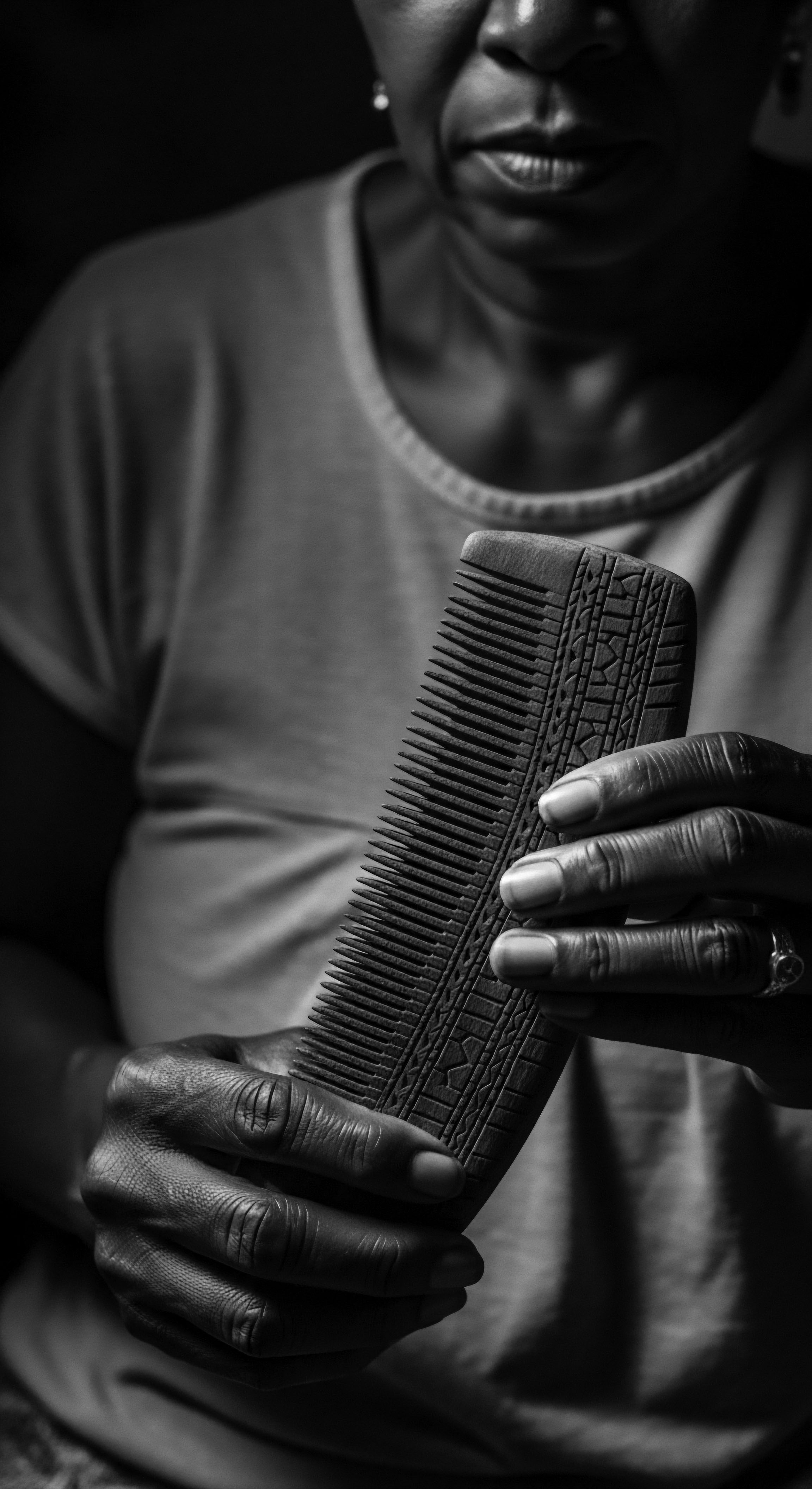
Fundamentals
The hair fiber, in its simplest interpretation, represents the visible portion of the hair that extends beyond the scalp. It is a biological filament, primarily composed of a resilient protein known as Keratin. This protein, arranged in a specific architecture, provides the hair with its structural integrity and distinct characteristics.
When considering textured hair, this fundamental understanding takes on deeper layers of meaning, connecting directly to a rich heritage of identity and communal care. The hair fiber’s existence is not merely biological; it carries the weight of history, cultural expression, and profound personal connection.
For those new to the discourse of textured hair, recognizing the hair fiber structure begins with appreciating its outward appearance ❉ the curl, the coil, the wave. Yet, beneath this visible form lies a complex arrangement of cellular components, each playing a role in how the hair behaves, responds to care, and ultimately, expresses its inherited pattern. This initial grasp of the hair fiber is a doorway into understanding why specific traditional practices have endured for generations within Black and mixed-race communities, speaking to an intuitive knowledge of hair’s needs long before scientific terminology emerged.
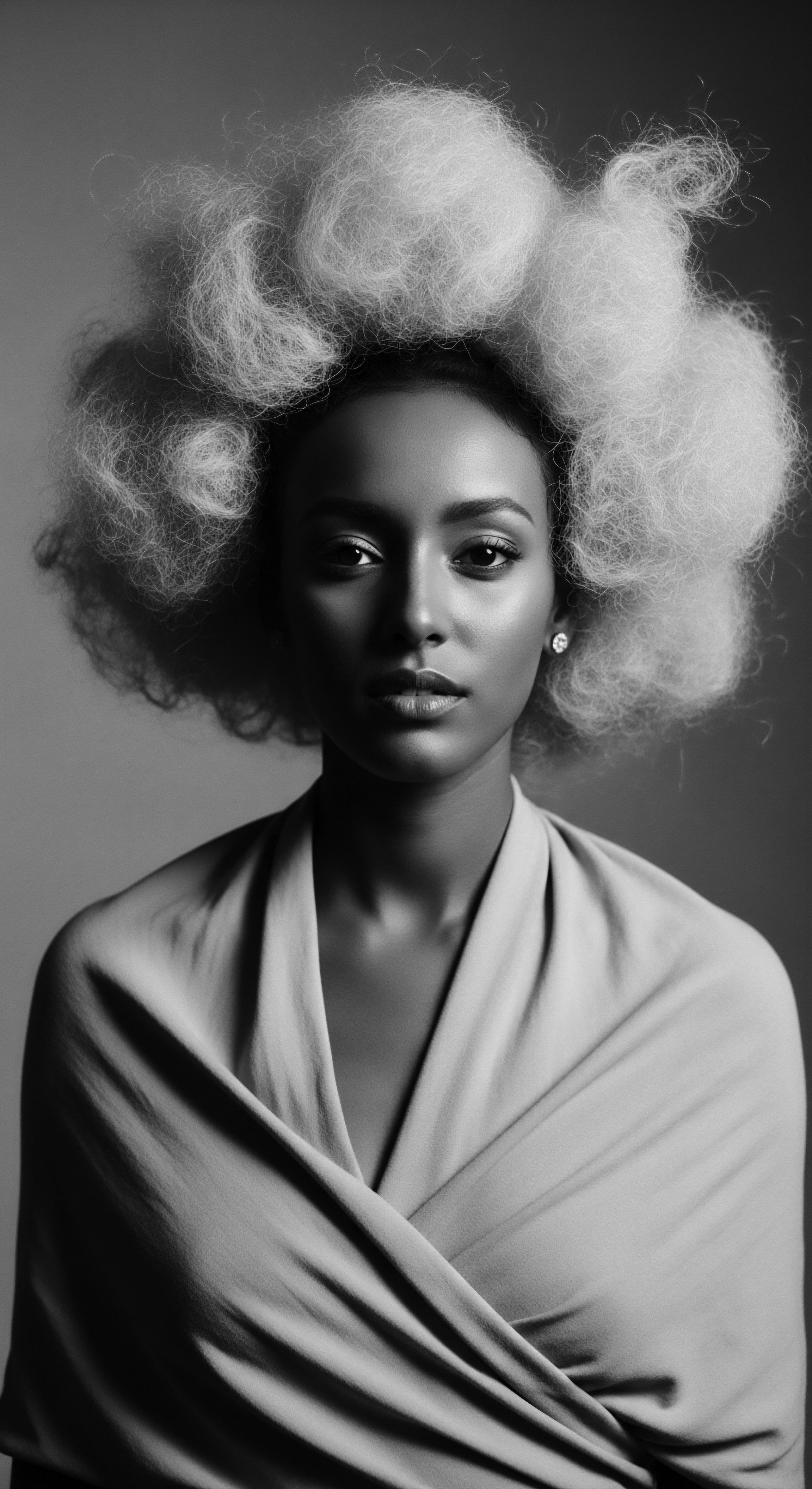
The Basic Components of a Hair Fiber
A hair fiber, at its most basic level, consists of three primary layers, each contributing to its overall strength and appearance. These layers, while present in all hair types, possess particular adaptations within textured hair that speak to its unique resilience and ancestral journey.
- Cuticle ❉ This outermost layer is a protective shield, comprising overlapping, flattened cells resembling shingles on a roof. In textured hair, these cuticular scales tend to be more lifted or open, a characteristic that influences moisture retention and susceptibility to external factors. This openness can explain why ancestral practices often focused on sealing the cuticle, using natural oils and butters to preserve hydration.
- Cortex ❉ The central and thickest layer, the cortex, holds the majority of the hair fiber’s mass. It is composed of tightly packed keratin bundles, responsible for the hair’s strength, elasticity, and color. The unique elliptical or flattened cross-sectional shape of textured hair fibers, compared to the more circular shape of straight hair, originates in the cortex and is directly linked to the hair’s curl pattern. This shape allows for the formation of tight coils and spirals, a testament to the biological artistry inherent in textured strands.
- Medulla ❉ The innermost core, the medulla, is not always present in every hair type or even every strand. Its exact purpose remains a subject of ongoing study, though it is believed to contribute to the hair’s overall strength and flexibility. Its presence can vary even within a single head of textured hair, adding to the complexity and individuality of each strand.
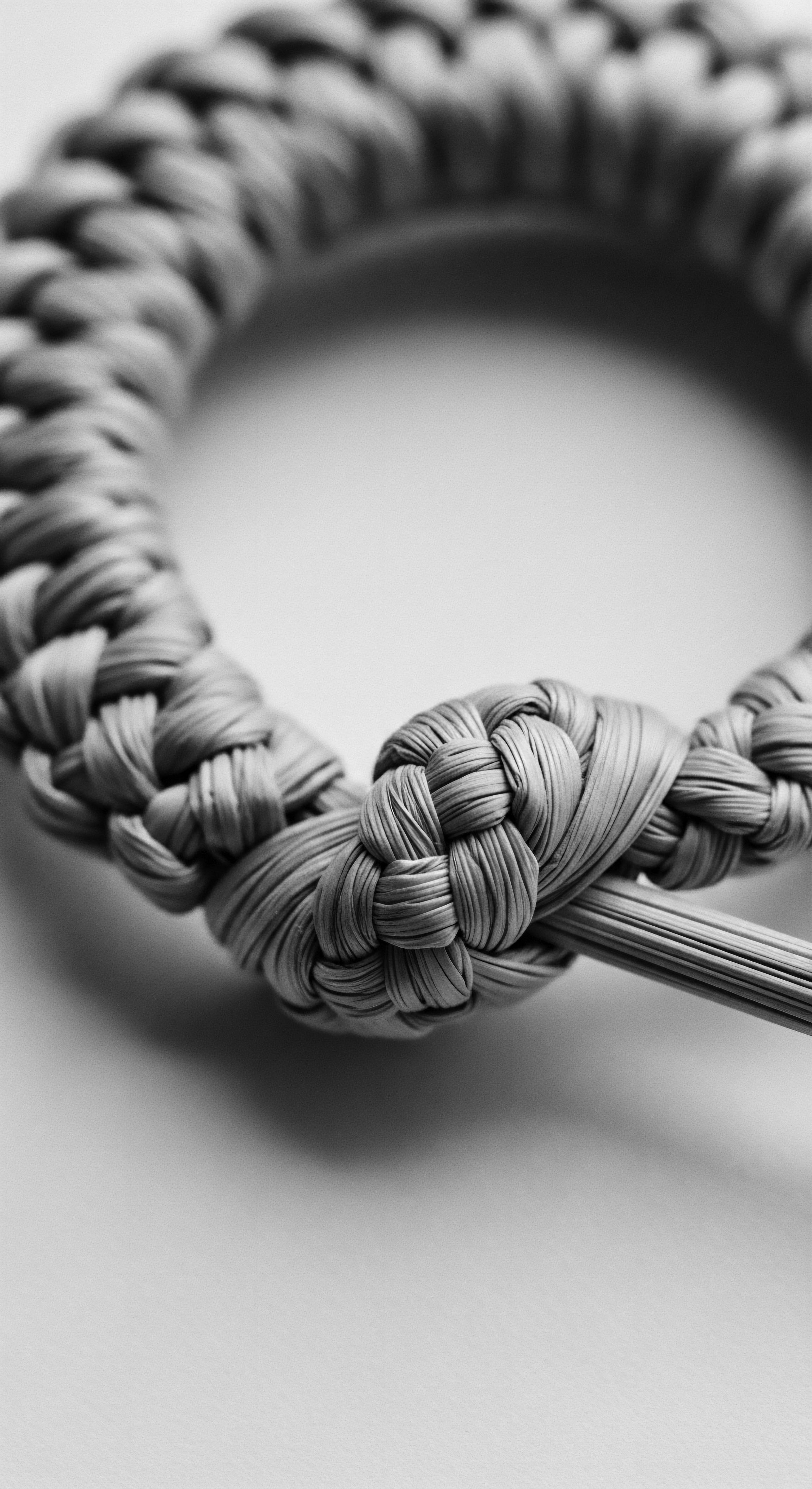
The Heritage of Hair’s Appearance
The outward appearance of textured hair, from its tight coils to its gentle waves, is not merely a matter of aesthetics; it is a profound expression of heritage. For millennia, across various African societies, hairstyles served as a visual language, communicating a person’s age, marital status, tribal affiliation, wealth, and even spiritual beliefs. The very form of the hair fiber itself, with its distinct curl patterns, became a canvas for these rich expressions.
Hair in ancient African civilizations was a powerful medium, signifying everything from social status to spiritual connection.
This deep connection to identity is evident in historical accounts. For instance, in pre-colonial African societies, one could often discern a person’s entire story by observing their hairstyle. Lori Tharps, co-author of Hair Story ❉ Untangling the Roots of Black Hair in America, notes that “just about everything about a person’s identity could be learned by looking at the hair”. This inherent communicative aspect of hair, rooted in its fiber structure, underscores why the deliberate shaving of heads during the transatlantic slave trade was a dehumanizing act, intended to strip away cultural identity and sever ancestral ties.
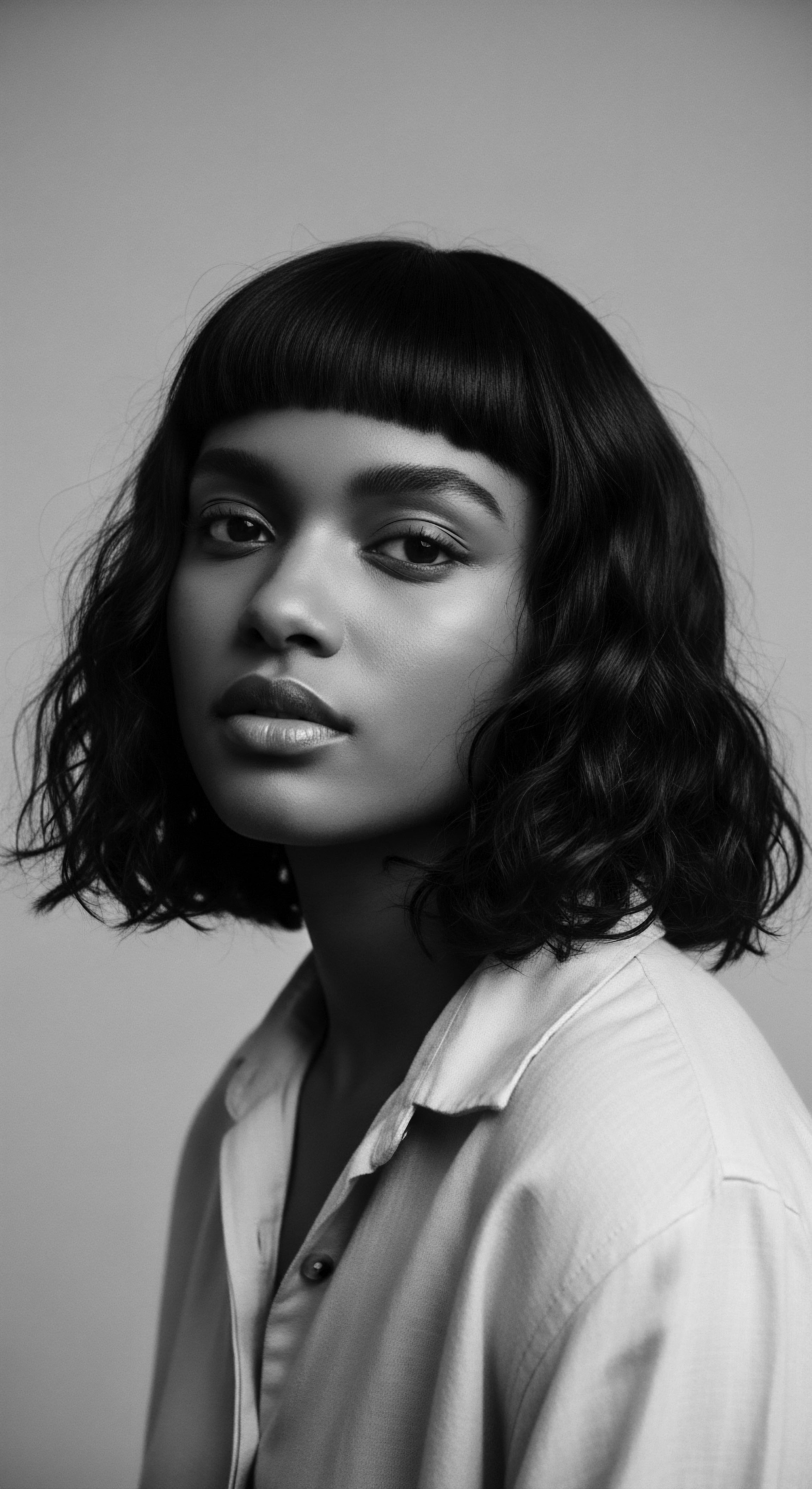
Intermediate
Moving beyond the foundational understanding, the hair fiber structure reveals itself as a dynamic biological marvel, particularly within the context of textured hair. Its inherent architecture, shaped by genetic predispositions, dictates not only its visible curl pattern but also its unique requirements for care and its historical resilience. The meaning of ‘Hair Fiber Structure’ at this level involves a deeper appreciation for the interplay of its cellular components and how these contribute to the distinct characteristics that define textured hair across the African diaspora. This understanding provides a bridge between the microscopic world of the hair strand and the expansive legacy of Black and mixed-race hair traditions.
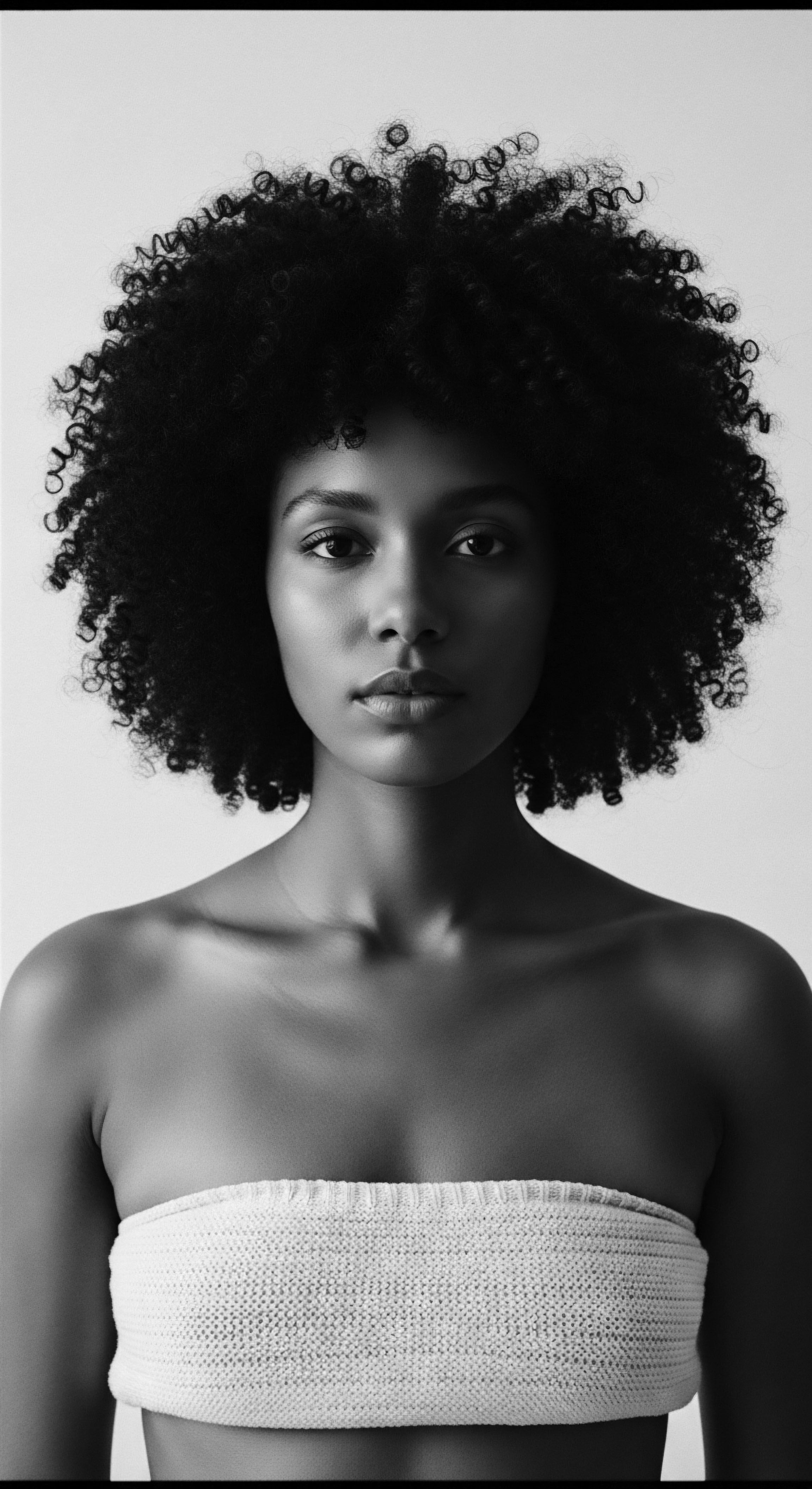
Microscopic Anatomy and Its Implications for Textured Hair
The intricate organization of the hair fiber’s layers holds particular significance for textured hair. The Cuticle, composed of overlapping keratin scales, is often more raised in coily and curly hair types. This structural characteristic means that textured hair can lose moisture more readily, making it prone to dryness and breakage if not adequately cared for. Traditional African hair care practices, passed down through generations, intuitively addressed this.
They utilized natural emollients and humectants long before modern science articulated the need for moisture retention in textured hair. Shea butter, various plant oils, and herbal infusions were not merely adornments; they were essential elements in maintaining the integrity and vitality of the hair fiber.
The Cortex, the hair’s primary strength-bearing component, is where the distinctive elliptical or flattened cross-section of textured hair originates. This non-circular shape causes the hair strand to curl as it grows, creating the diverse array of waves, curls, and coils seen in Black and mixed-race hair. The arrangement of keratin proteins within this uniquely shaped cortex also influences the hair’s elasticity and how it responds to tension. This structural reality explains why textured hair can be both incredibly strong and surprisingly delicate, particularly at its bends and turns, where stress points can occur.
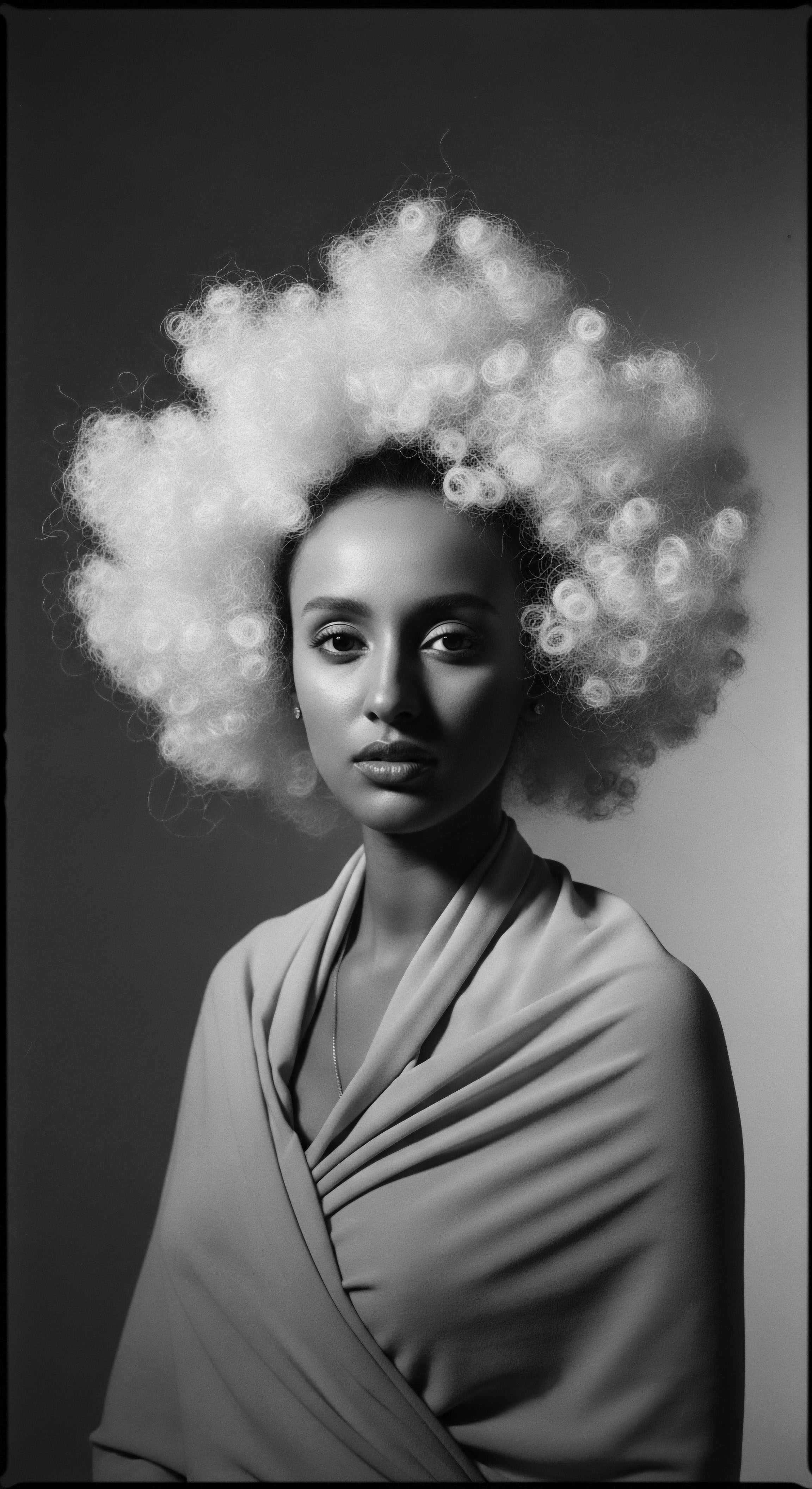
The Legacy of Care and Adaptation
The journey of textured hair, and by extension its fiber structure, is deeply intertwined with a legacy of care and adaptation. During the transatlantic slave trade, enslaved Africans were forcibly stripped of their traditional tools and hair care methods. Despite this profound disruption, acts of resistance emerged through the preservation of hair traditions. Enslaved women, for instance, braided rice seeds into their hair as a means of survival, smuggling sustenance and cultural heritage across continents.
This remarkable historical example underscores the deep connection between the physical hair fiber and the spirit of survival and ingenuity within the diaspora. The hair fiber, therefore, became a silent witness to resilience.
Hair braiding, beyond its aesthetic appeal, served as a clandestine language and a vessel for survival during times of unimaginable oppression.
The practice of braiding, a cornerstone of traditional African hair care, is a powerful illustration of this adaptive heritage. Braids were not only a protective style, safeguarding the hair fiber from damage, but also a sophisticated form of communication. Specific patterns could convey messages, indicate marital status, or even serve as maps for escape routes from plantations. This historical context elevates the understanding of hair fiber structure beyond mere biology; it becomes a symbol of ingenuity, community, and an unbroken lineage of cultural expression.
The societal meaning of hair has also evolved through periods of immense pressure. The Eurocentric beauty standards imposed during and after slavery led to the perception of naturally coily hair as “unprofessional” or “undone”. This pressure often compelled individuals to chemically straighten their hair, altering the very fiber structure to conform to an imposed aesthetic.
Yet, movements like the Black Power movement in the 1960s saw the resurgence of the Afro, a deliberate embracing of natural hair texture as a political statement and a symbol of Black pride and resistance. The hair fiber, in this context, became a visible declaration of self-acceptance and a reclamation of ancestral identity.
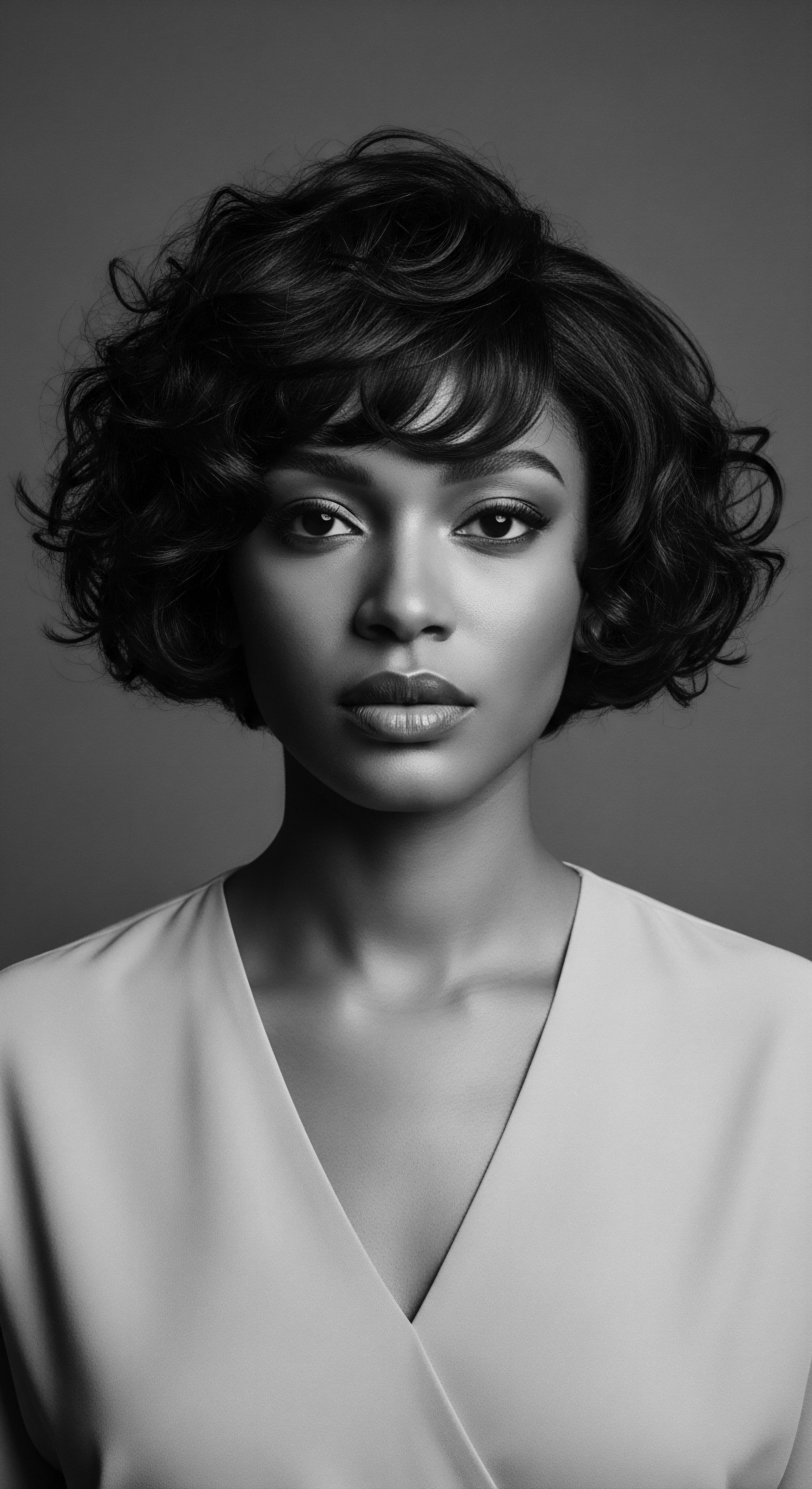
Ancestral Techniques and Modern Understanding
Many ancestral techniques for caring for textured hair find validation in contemporary scientific understanding of the hair fiber. The emphasis on moisturizing, protective styling, and gentle handling aligns with the unique needs of coily and curly strands, which are more susceptible to dryness and mechanical damage due to their structural configuration.
- Oiling and Sealing ❉ Traditional practices of applying oils like shea butter and coconut oil deeply nourished the hair. Modern science affirms these practices help to coat the hair shaft, reducing moisture loss from the lifted cuticle and providing lubrication to prevent breakage.
- Protective Styles ❉ Braids, twists, and cornrows, ancient practices in African communities, minimize manipulation of the hair fiber, reducing tangling and breakage. This allows the hair to retain length and protects it from environmental stressors.
- Combing and Detangling ❉ The use of wide-toothed combs, a practice rooted in African traditions, acknowledges the fragility of textured hair when wet or dry. This gentle approach prevents excessive stretching and breakage of the hair fiber, particularly at its delicate curves.
Understanding the hair fiber structure at this intermediate level allows for a deeper appreciation of the wisdom embedded in ancestral hair care. It highlights how generations of Black and mixed-race individuals, through observation and practice, developed sophisticated methods to honor and maintain their unique hair, even in the face of immense adversity.
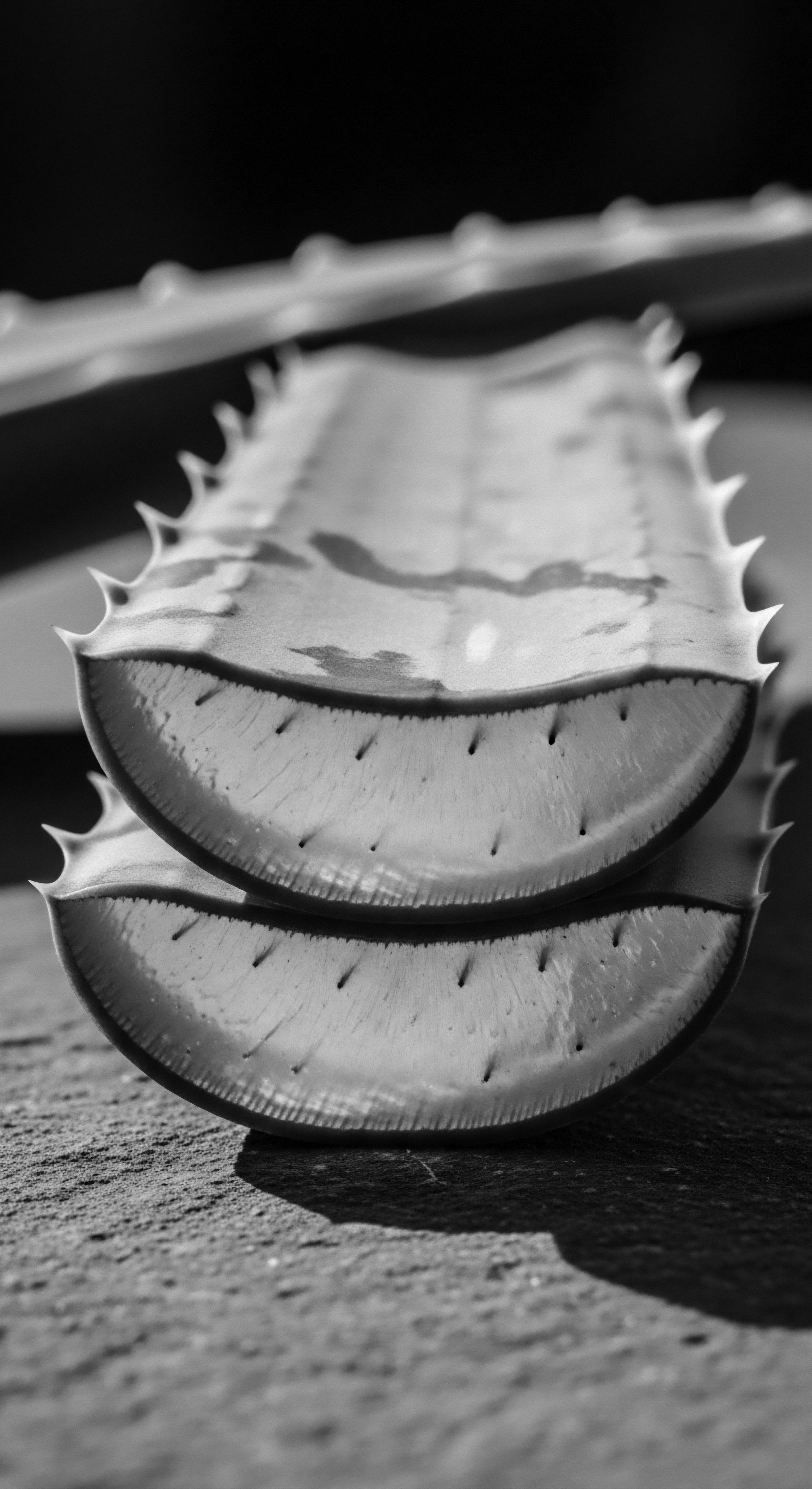
Academic
The Hair Fiber Structure, from an academic perspective, is not merely a biological construct but a profound locus of cultural, historical, and socio-political significance, particularly when examined through the lens of textured hair heritage. This elucidation delves into the complex interplay of keratinocyte differentiation, disulfide bond formation, and follicle morphology that underpins the macroscopic appearance of textured hair, simultaneously tracing its ancestral narrative and its enduring meaning within Black and mixed-race communities. The meaning here transcends a simple definition, offering an interpretation of the hair fiber as a living archive, bearing the imprints of genetic inheritance, environmental adaptation, and centuries of human experience.
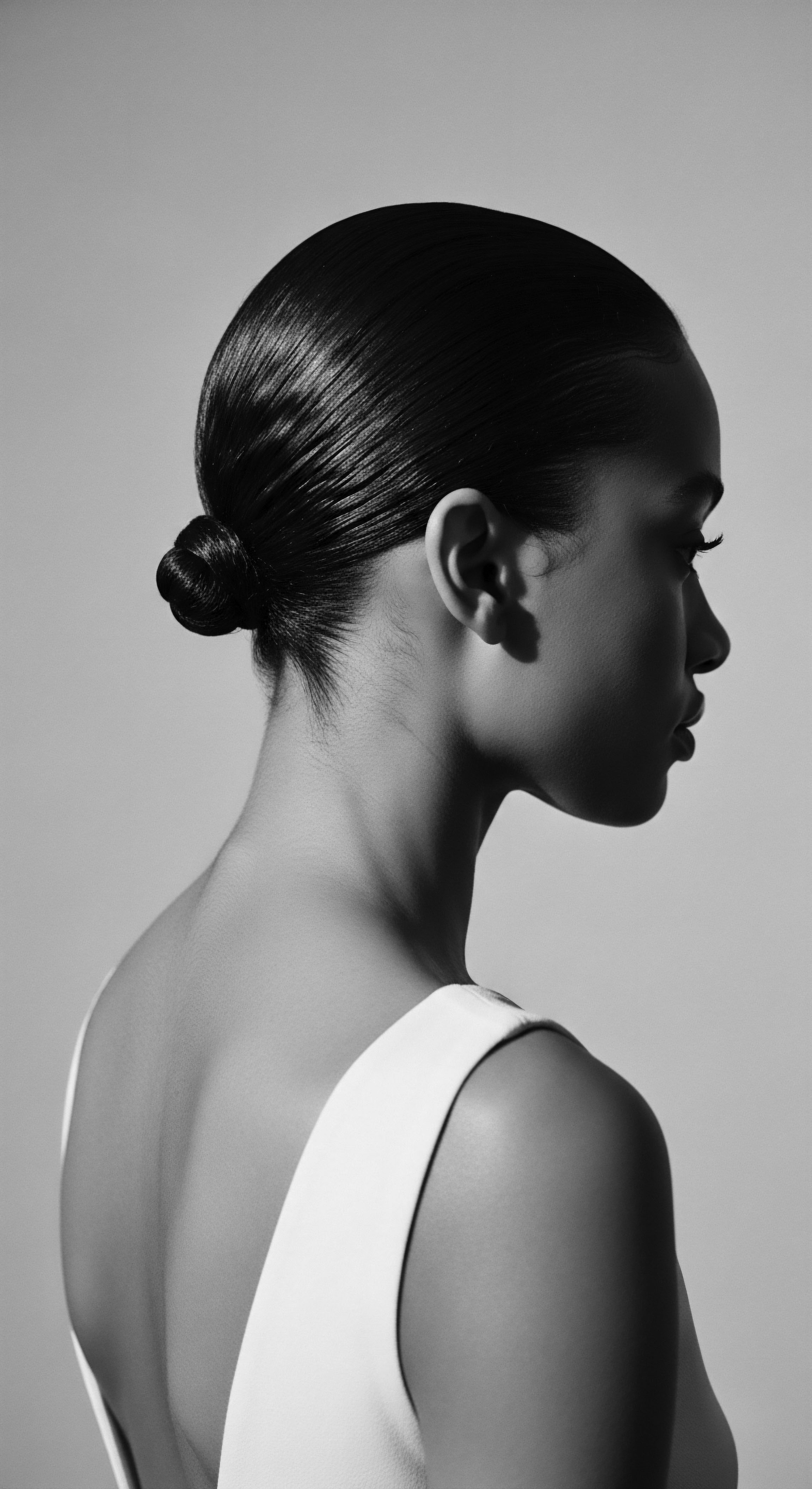
The Biomechanical and Biochemical Architecture of Textured Hair
At the molecular level, the Hair Fiber Structure is a marvel of biological engineering. It is primarily composed of Keratin Proteins, specifically alpha-keratins, which assemble into hierarchical structures ❉ microfibrils, macrofibrils, and ultimately, the robust cortical cells of the hair shaft. The precise arrangement and cross-linking of these keratin chains, primarily through disulfide bonds, dictate the hair’s tensile strength, elasticity, and resistance to chemical and physical stressors.
In textured hair, the elliptical or flattened cross-sectional shape of the hair shaft, originating from the asymmetrical distribution of keratinocytes within the hair follicle, compels the hair to curl upon growth. This distinct morphology results in uneven stress distribution along the fiber, particularly at the curves of the coil, rendering textured hair inherently more susceptible to mechanical breakage compared to straight hair.
Furthermore, the cuticle, the outermost protective layer, exhibits variations in textured hair. The scales of the cuticle in coily hair types tend to be more lifted and less compactly aligned than in straight hair. This characteristic contributes to increased porosity, leading to more rapid moisture loss and a greater vulnerability to environmental humidity fluctuations. The biochemical composition, including lipid content and protein distribution, also plays a role in the hydration and flexibility of the hair fiber.
A lower lipid content in the cuticle of textured hair can exacerbate dryness, necessitating a more rigorous and specific moisture-retention regimen. This scientific understanding validates the efficacy of traditional care practices, such as the consistent application of natural oils and butters, which historically served to mitigate moisture depletion and enhance the hair’s protective barrier.
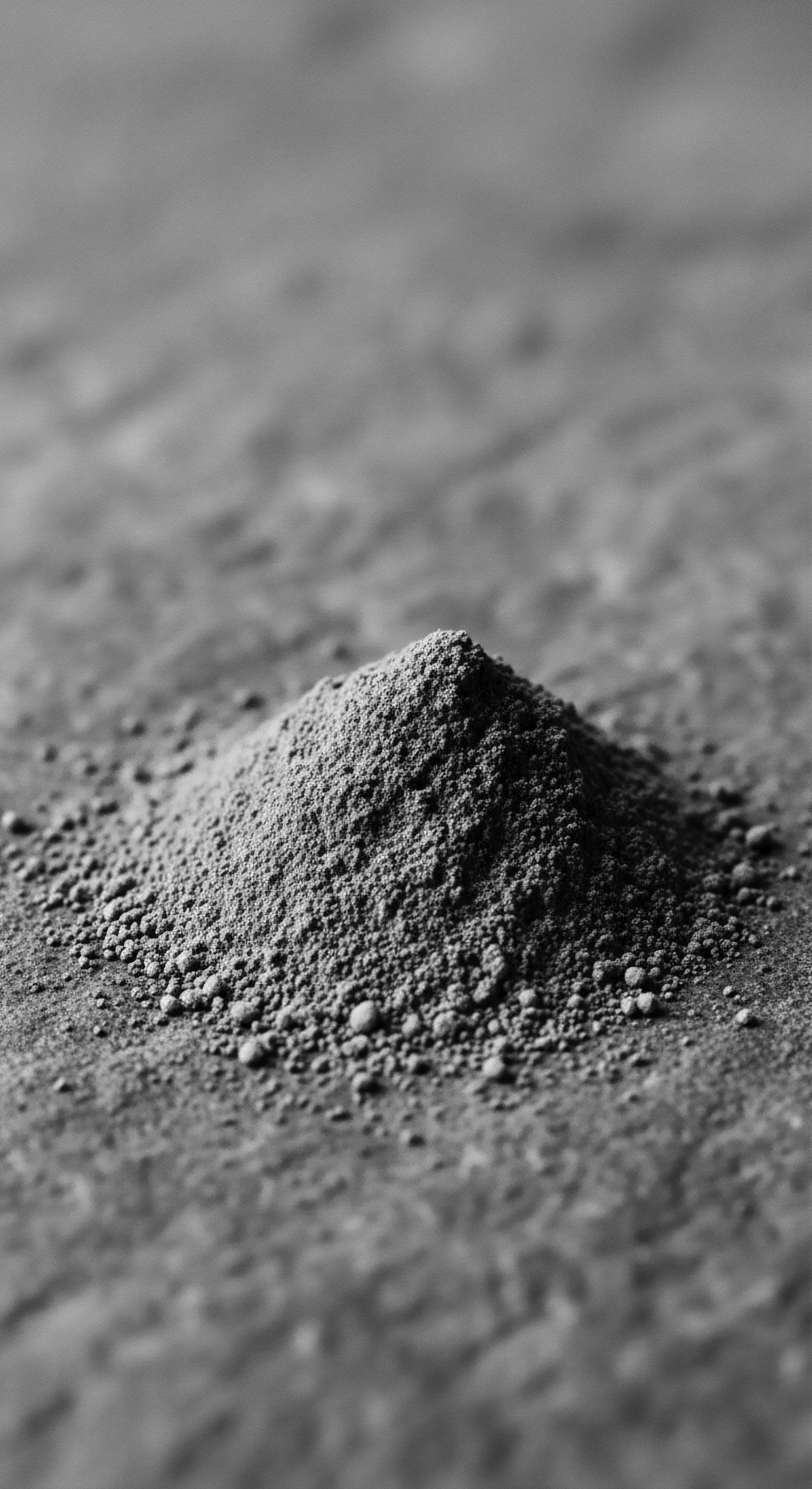
The Hair Fiber as a Cultural Archive ❉ A Case Study in Resistance
The hair fiber structure, particularly in its textured manifestations, serves as a tangible link to a profound heritage, embodying narratives of resistance and identity across the African diaspora. One compelling historical example that powerfully illuminates this connection is the ingenious use of hair braiding as a covert communication system and a means of survival during the transatlantic slave trade. Enslaved African women, forcibly transported across the Middle Passage, were systematically stripped of their cultural markers, including their traditional hairstyles and grooming tools.
This act of forced hair shaving was a deliberate attempt to dehumanize and erase their ancestral identities. Yet, in defiance of this brutal oppression, the intrinsic characteristics of their hair fiber, particularly its ability to hold intricate braided patterns, became an unexpected vehicle for resistance.
The intricate braiding patterns in the hair of enslaved Africans encoded not only cultural memory but also literal pathways to freedom.
A documented practice reveals that enslaved women would meticulously braid rice seeds, precious grains from their homelands, into their hair before being transported. These seeds, hidden within the tightly woven coils and braids of their hair, provided a vital source of sustenance upon arrival in the Americas, allowing them to cultivate crops and sustain their communities in a new, hostile environment. This act was a profound assertion of agency and a testament to the enduring power of cultural memory embedded within the very structure of their hair. Moreover, historical accounts suggest that cornrows, a traditional African braiding style, were used to create maps of escape routes from plantations, with the patterns delineating paths through swamps and forests.
The curves and turns of the braids mirrored the terrain, transforming the hair fiber into a living, coded cartography of freedom. This specific historical example demonstrates how the inherent structural properties of textured hair were ingeniously repurposed for survival and liberation, making the hair fiber an active participant in the narrative of resistance.
This historical precedent highlights the deep sociological and psychological implications of hair fiber structure. The hair, in its physical form and styling potential, became a site of cultural preservation and defiance. The subsequent demonization of natural Black hair textures, often described as “kinky” or “wooly” and deemed “unprofessional” under Eurocentric beauty standards, represents a continuation of this historical oppression, attempting to sever the intrinsic link between textured hair and its heritage of strength and self-expression. However, the resilience of the hair fiber, both biologically and culturally, is reflected in contemporary movements that celebrate natural hair, reclaiming its beauty and its ancestral significance.
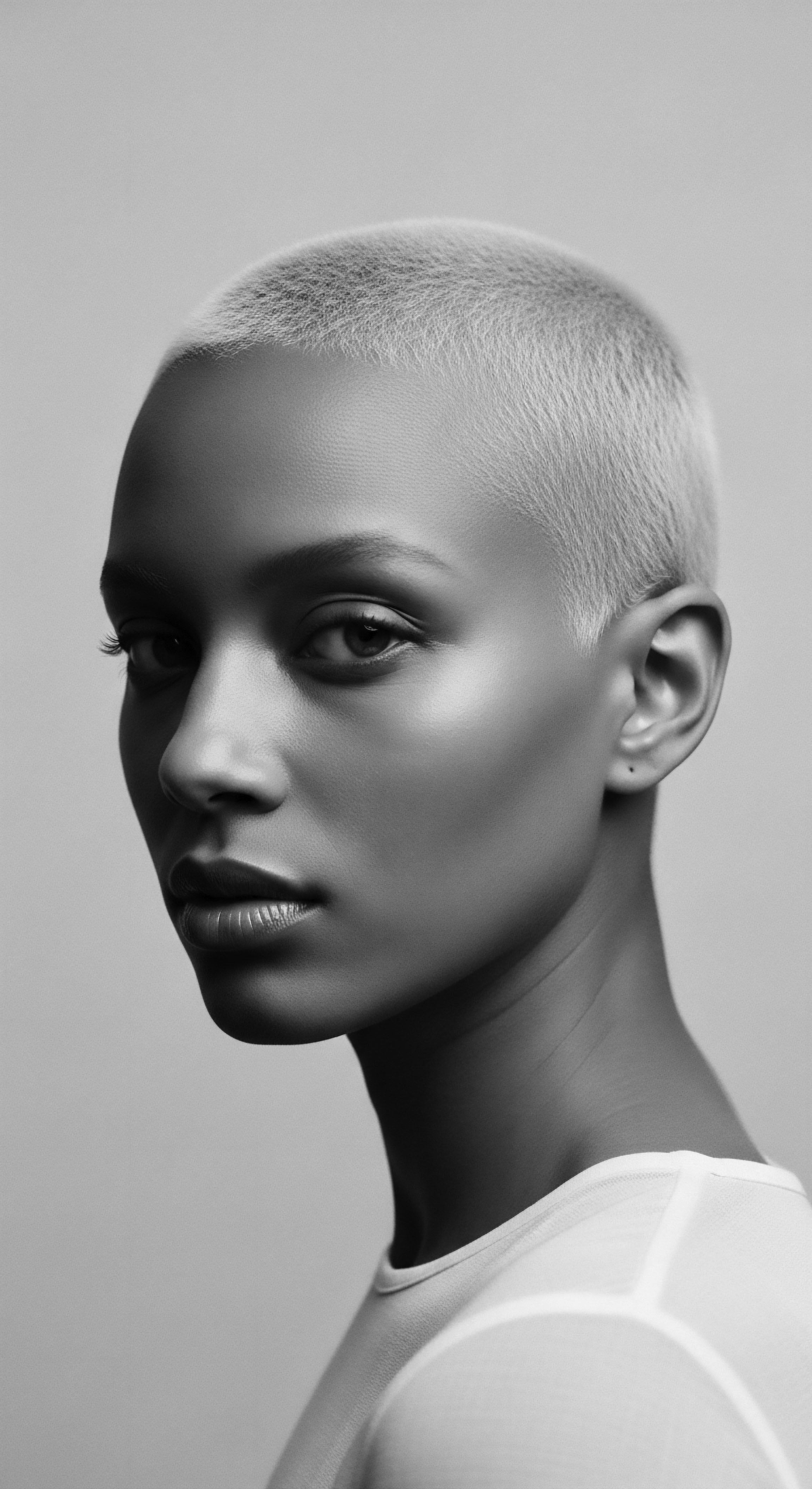
Follicle Morphology and Hair Growth Dynamics
The hair follicle, the dermal sheath from which the hair fiber emerges, dictates the hair’s shape and curl pattern. In individuals with textured hair, the follicle is typically asymmetrical or curved, causing the hair shaft to grow in a helical or spiral fashion. This curvature influences the distribution of keratin proteins and disulfide bonds within the hair fiber, leading to differential growth rates along the inner and outer curves of the strand, which contributes to the formation of coils.
The growth dynamics of textured hair are also distinct. The slower growth rate and higher density of hair follicles in certain textured hair types, combined with the structural characteristics of the fiber, contribute to its volume and unique styling capabilities. Understanding these underlying biological mechanisms provides a scientific foundation for appreciating the diversity of textured hair and the rationale behind culturally specific care practices designed to optimize its health and appearance.
The academic examination of Hair Fiber Structure, particularly in textured hair, reveals a narrative far richer than mere biology. It is a testament to the adaptive genius of human populations, the enduring power of cultural identity, and the continuous reclamation of a heritage that has been both celebrated and suppressed. The hair fiber, therefore, stands as a complex and dynamic entity, inviting continuous scholarly inquiry into its multifaceted meaning and its profound connection to the human story.
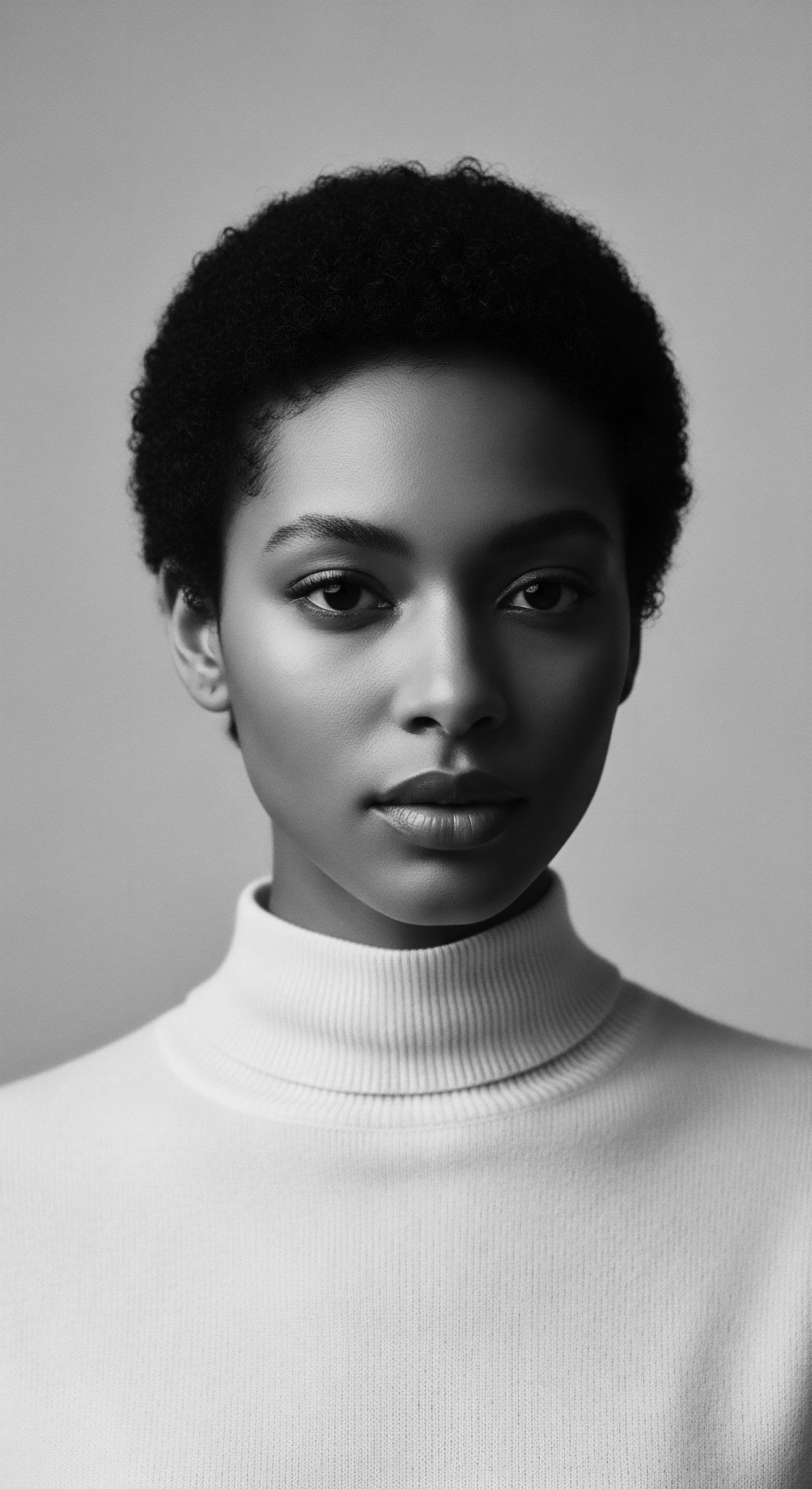
Reflection on the Heritage of Hair Fiber Structure
The journey through the Hair Fiber Structure, from its elemental biology to its profound cultural resonance, leaves us with a deeper sense of reverence for the textured strand. It is more than a biological filament; it is a living chronicle, whispering tales of ancient lands, whispered wisdom, and unwavering resilience. The very coils and curves of textured hair carry the echoes of ancestral hands that nurtured, adorned, and interpreted its language, seeing in its form not just beauty, but a connection to the divine, to community, and to self.
To truly comprehend the Hair Fiber Structure, particularly within the context of Black and mixed-race hair, requires acknowledging its enduring heritage. It is a heritage shaped by the earth’s natural elements, by the ingenuity of those who learned to coax life and strength from its delicate form, and by the trials of a history that sought to diminish its significance. Yet, through every challenge, the hair fiber has persisted, adapting, and continuously reasserting its profound meaning.
Each textured strand carries the memory of generations, a testament to resilience, wisdom, and an unbroken lineage of identity.
This living library, Roothea, seeks to honor that enduring spirit. It invites us to look beyond the superficial, to delve into the very ‘Soul of a Strand,’ recognizing that the care we bestow upon our textured hair today is a continuation of an ancient dialogue. It is an act of self-love, a tribute to our ancestors, and a powerful declaration for future generations, ensuring that the rich heritage embedded within each hair fiber continues to flourish, unbound and celebrated. The structural integrity of the hair fiber, in its biological and cultural manifestations, stands as a testament to the inherent strength and beauty of textured hair, a beauty that has weathered storms and emerged, always, with its crown intact.
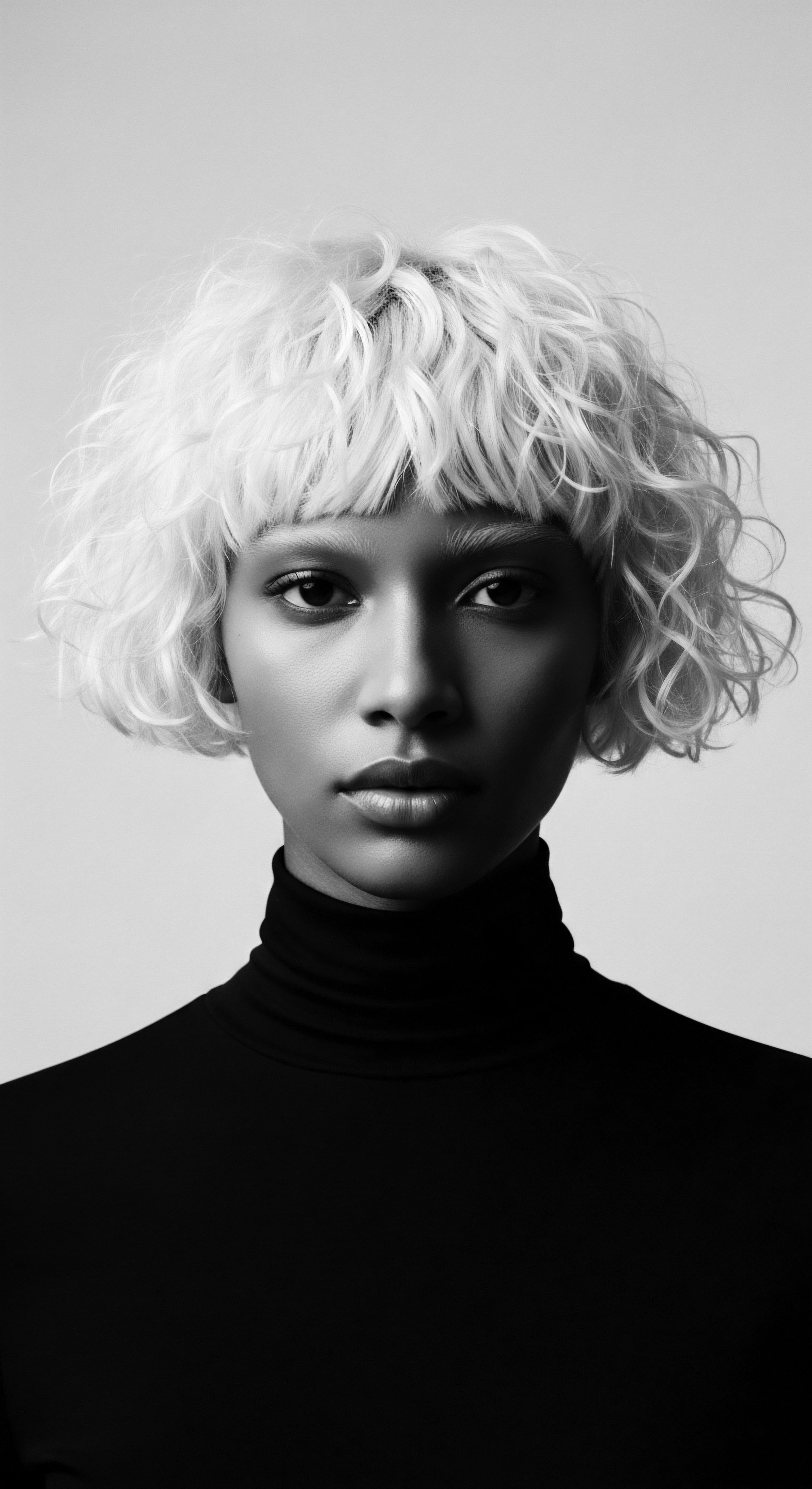
References
- Byrd, A. & Tharps, L. L. (2014). Hair Story ❉ Untangling the Roots of Black Hair in America. St. Martin’s Griffin.
- Jackson, B. & Rodriguez, A. (2023). What Every Dermatologist Must Know About the History of Black Hair. Cutis, 112(5), E26-E29.
- Omotos, A. (2018). The “Dreaded” Colonial Legacy ❉ African Hairstyles. Journal of Pan African Studies, 11(7), 154-167.
- Rosado, S. (2003). Hair Story ❉ Untangling the Roots of Black Hair in America. St. Martin’s Press.
- Thompson, A. (2009). Black Women and the Politics of Hair. Routledge.
